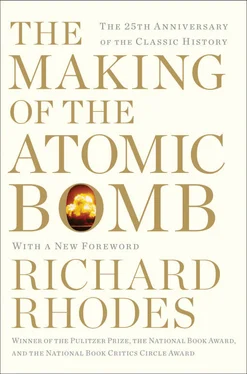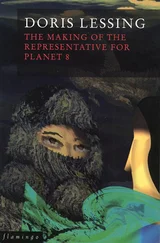Teller was too young to leave Hungary during the worst of the Horthy years. This was the adolescent period, as Time magazine paraphrased Teller later, when Max Teller “dinned into his son two grim lessons: 1) he would have to emigrate to some more favorable country when he grew up and 2) as a member of a disliked minority he would have to excel the average just to stay even.” 423Teller added a lesson of his own. “I loved science,” he told an interviewer once. “But also it offered a possibility for escaping this doomed society.” 424Von Kármán embeds in his autobiography a similarly striking statement about the place of science in his emotional life. When the Hungarian Soviet Republic collapsed he retreated to the home of a wealthy friend, then found his way back to Germany. “I was glad to get out of Hungary,” he writes of his state of mind then. “I felt I had had enough of politicians and government upheavals…. Suddenly I was enveloped in the feeling that only science is lasting.” 425
That science can be a refuge from the world is a conviction common among men and women who turn to it. Abraham Pais remarks that Einstein “once commented that he had sold himself body and soul to science, being in flight from the ‘I∍ and the ‘we’ to the ‘it.’” 426But science as a means of escaping from the familiar world of birth and childhood and language when that world mounts an overwhelming threat—science as a way out, a portable culture, an international fellowship and the only abiding certitude—must become a more desperate and therefore a more total dependency. Chaim Weizmann gives some measure of that totality in the harsher world of the Russian Pale when he writes that “the acquisition of knowledge was not for us so much a normal process of education as the storing up of weapons in an arsenal by means of which we hoped later to be able to hold our own in a hostile world.” 427He remembers painfully that “every division of one’s life was a watershed.” 428
Teller’s experience in Hungary before he left it in 1926, at seventeen, for the Technical Institute at Karlsruhe was far less rigorous than Weizmann’s in the Pale. But external circumstance is no sure measure of internal wounding, and there are not many horrors as efficient for the generation of deep anger and terrible lifelong insecurity as the inability of a father to protect his child.
* * *
“In the last few years,” Niels Bohr wrote the German theoretical physicist Arnold Sommerfeld at Munich in April 1922, “I have often felt myself scientifically very lonesome, under the impression that my effort to develop the principles of the quantum theory systematically to the best of my ability has been received with very little understanding.” 429Through the war years Bohr had struggled to follow, wherever it might lead, the “radical change” he had introduced into physics. It led to frustration. However stunning Bohr’s prewar results had been, too many older European scientists still thought his inconsistent hypotheses ad hoc and the idea of a quantized atom repugnant. The war itself stalled advance.
Yet he persisted, groping his way forward in the darkness. “Only a rare and uncanny intuition,” writes the Italian physicist Emilio Segrè, “saved Bohr from getting lost in the maze.” 430He guided himself delicately by what he called the correspondence principle. As Robert Oppenheimer once explained it, “Bohr remembered that physics was physics and that Newton described a great part of it and Maxwell a great part of it.” So Bohr assumed that his quantum rules must approximate, “in situations where the actions involved were large compared to the quantum, to the classical rules of Newton and of Maxwell.” 431That correspondence between the reliable old and the unfamiliar new gave him an outer limit, a wall to feel his way along.
Bohr built his Institute for Theoretical Physics with support from the University of Copenhagen and from Danish private industry, occupying it on January 18, 1921, after more than a year of delay—he struggled with the architect’s plans as painfully as he struggled with his scientific papers. The city of Copenhagen ceded land for the institute on the edge of the Faelledpark, broad with soccer fields, where a carnival annually marks the Danish celebration of Constitution Day. The building itself was modest gray stucco with a red tile roof, no larger than many private homes, with four floors inside that looked like only three outside because the lowest floor was built partly below grade and the top floor, which served the Bohrs at first as an apartment, extended into the space under the peaked roof (later, as Bohr’s family increased to five sons, he built a house next door and the apartment served as living quarters for visiting students and colleagues). The institute included a lecture hall, a library, laboratories, offices and a popular PingPong table where Bohr often played. “His reactions were very fast and accurate,” says Otto Frisch, “and he had tremendous will power and stamina. In a way those qualities characterized his scientific work as well.” 432
In 1922, the year his Nobel Prize made him a Danish national hero, Bohr accomplished a second great theoretical triumph: an explanation of the atomic structure that underlies the regularities of the periodic table of the elements. It linked chemistry irrevocably to physics and is now standard in every basic chemistry text. Around the nucleus, Bohr proposed, atoms are built up of successive orbital shells of electrons—imagine a set of nested spheres—each shell capable of accommodating up to a certain number of electrons and no more. Elements that are similar chemically are similar because they have identical numbers of electrons in their outermost shells, available there for chemical combination. Barium, for example, an alkaline earth, the fifty-sixth element in the periodic table, atomic weight 137.34, has electron shells filled successively by 2, 8, 18, 18, 8 and 2 electrons. Radium, another alkaline earth, the eighty-eighth element, atomic weight 226, has electron shells filled successively by 2, 8, 18, 32, 18, 8 and 2 electrons. Because the outer shell of each element has two valence electrons, barium and radium are chemically similar despite their considerable difference in atomic weight and number. “That [the] insecure and contradictory foundation [of Bohr’s quantum hypotheses],” Einstein would say, “was sufficient to enable a man of Bohr’s unique instinct and perceptiveness to discover the major laws of spectral lines and of the electron shells of the atom as well as their significance for chemistry appeared to me like a miracle…. This is the highest form of musicality in the sphere of thought.” 433
Confirming the miracle, Bohr predicted in the autumn of 1922 that element 72 when discovered would not be a rare earth, as chemists expected and as elements 57 through 71 are, but would rather be a valence 4 metal like zirconium. George de Hevesy, now settled in at Bohr’s institute, and a newly arrived young Dutchman, Dirk Coster, went to work using X-ray spectroscopy to look for the element in zircon-bearing minerals. They had not finished their checking when Bohr went off with Margrethe in early December to claim his Nobel Prize. They called him in Stockholm the night before his Nobel lecture, only just in time: they had definitely identified element 72 and it was chemically almost identical to zirconium. They named the new element hafnium after Hafnia, the old Roman name for Copenhagen. Bohr announced its discovery with pride at the conclusion of his lecture the next day.
Despite his success with it, quantum theory needed a more solid foundation than Bohr’s intuition. Arnold Sommerfeld in Munich was an early contributor to that work; after the war the brightest young men, searching out the growing point of physics, signed on to help. Bohr remembered the period as “a unique cooperation of a whole generation of theoretical physicists from many countries,” an “unforgettable experience.” 434He was lonesome no more.
Читать дальше












